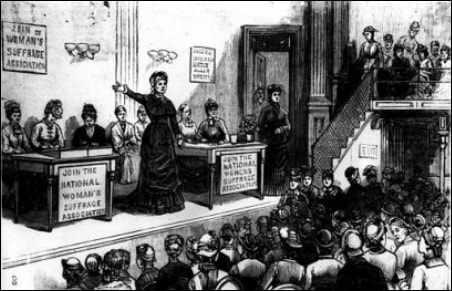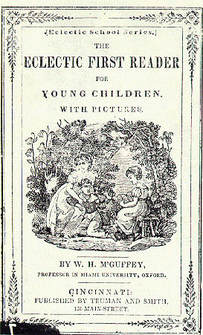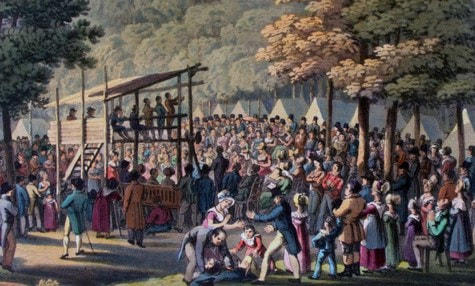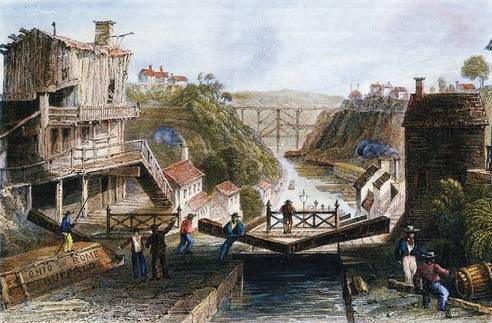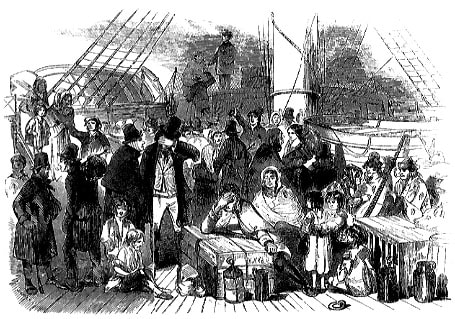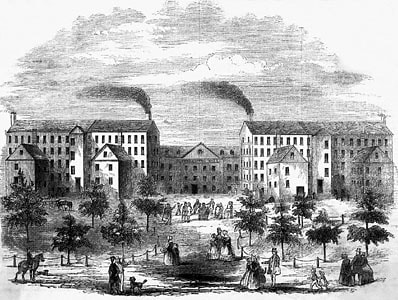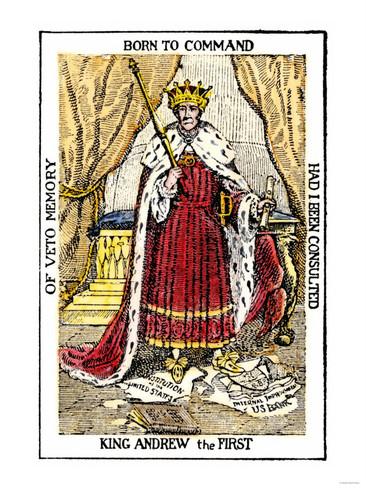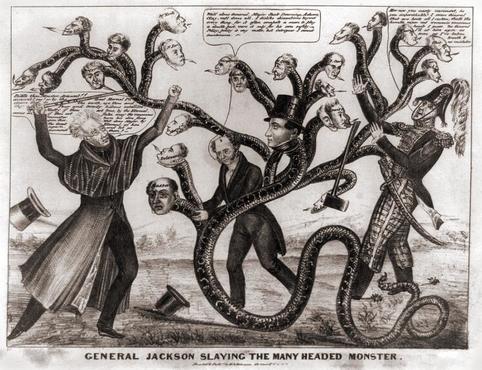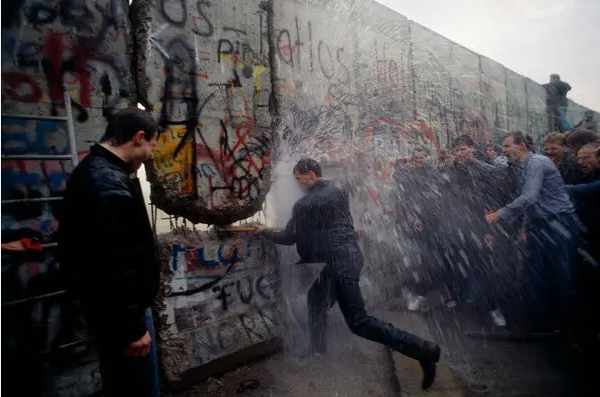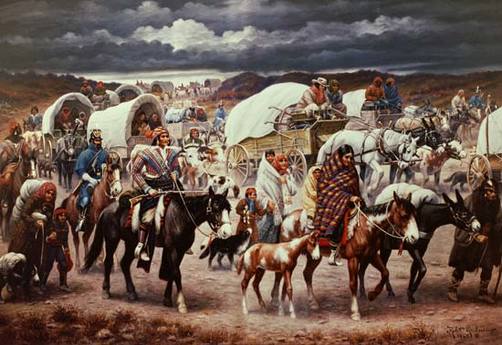|
Learning Target:
I can describe the social changes that took place in the United States from 1790 to 1860, & I can analyze their effects on the nation. Critical Vocabulary: Romantic Movement, Transcendentalism, Ralph Waldo Emerson, Henry David Thoreau, “On the Duty of Civil Disobedience,” Washington Irving, James Fenimore Cooper, Edgar Allen Poe, Nathaniel Hawthorne, Herman Melville, Walt Whitman, Second Great Awakening, Charles Grandison Finney, Oberlin College, New Harmony, Brook Farm, Shakers, Oneida Colony, Joseph Smith, Church of Jesus Christ of Latter-day Saints, Brigham Young, Thomas H. Gallaudet, Dorothea Dix, Horace Mann, Catharine Beecher, Temperance Movement, American Temperance Union, Neal Dow, Sarah and Angelina Grimké, Sojourner Truth, Lucretia Mott, Elizabeth Cady Stanton, Seneca Falls Convention, "Declaration of Sentiments and Resolutions," Susan B. Anthony, Elizabeth Blackwell, "Peculiar Institution," American Colonization Society, Republic of Liberia, Nat Turner's Rebellion, William Lloyd Garrison, The Liberator, American Anti-Slavery Society, Frederick Douglass, "Gag Rule," Liberty Party Today's Agenda:
Homework: Antebellum Reform Movements Reading
0 Comments
Learning Target:
I can describe the social changes that took place in the United States from 1790 to 1860, & I can analyze their effects on the nation. Critical Vocabulary: Romantic Movement, Transcendentalism, Ralph Waldo Emerson, Henry David Thoreau, “On the Duty of Civil Disobedience,” Washington Irving, James Fenimore Cooper, Edgar Allen Poe, Nathaniel Hawthorne, Herman Melville, Walt Whitman, Second Great Awakening, Charles Grandison Finney, Oberlin College, New Harmony, Brook Farm, Shakers, Oneida Colony, Joseph Smith, Church of Jesus Christ of Latter-day Saints, Brigham Young, Thomas H. Gallaudet, Dorothea Dix, Horace Mann, Catharine Beecher, Temperance Movement, American Temperance Union, Neal Dow, Sarah and Angelina Grimké, Sojourner Truth, Lucretia Mott, Elizabeth Cady Stanton, Seneca Falls Convention, "Declaration of Sentiments and Resolutions," Susan B. Anthony, Elizabeth Blackwell, "Peculiar Institution," American Colonization Society, Republic of Liberia, Nat Turner's Rebellion, William Lloyd Garrison, The Liberator, American Anti-Slavery Society, Frederick Douglass, "Gag Rule," Liberty Party, Today's Agenda:
Homework: Antebellum Reform Movements Reading Content Standards:
Students will analyze how history is a series of connected events shaped by multiple cause and effect relationships, tying past to present. Learning Target: I can describe the social changes that took place in the United States from 1790 to 1860, & I can analyze their effects on the nation. Critical Vocabulary: Romantic Movement, Transcendentalism, Ralph Waldo Emerson, Henry David Thoreau, “On the Duty of Civil Disobedience,” Washington Irving, James Fenimore Cooper, Edgar Allen Poe, Nathaniel Hawthorne, Herman Melville, Walt Whitman, Second Great Awakening, Charles Grandison Finney, Oberlin College, New Harmony, Brook Farm, Shakers, Oneida Colony, Joseph Smith, Church of Jesus Christ of Latter-day Saints, Brigham Young, Thomas H. Gallaudet, Dorothea Dix, Horace Mann, Catharine Beecher, Temperance Movement, American Temperance Union, Neal Dow, Sarah and Angelina Grimké, Sojourner Truth, Lucretia Mott, Elizabeth Cady Stanton, Seneca Falls Convention, "Declaration of Sentiments and Resolutions," Susan B. Anthony, Elizabeth Blackwell, "Peculiar Institution," American Colonization Society, Republic of Liberia, Nat Turner's Rebellion, William Lloyd Garrison, The Liberator, American Anti-Slavery Society, Frederick Douglass, "Gag Rule," Liberty Party, Today's Agenda:
Homework: Antebellum Reforms Reading Content Standards:
Students will analyze how history is a series of connected events shaped by multiple cause and effect relationships, tying past to present. Learning Target: I can describe the economic changes that took place in the United States from 1790 to 1860, & I can analyze their effects on the nation. Critical Vocabulary: “Black Forties,” Political Machines, “Tammany Hall,” “Know-Nothing” Party, Samuel Slater, Eli Whitney, Charles Goodyear, Samuel Morse, Elias Howe, Lowell Mills, Commonwealth v. Hunt, Preemption Act of 1830, Homestead Act, John Deere, Cyrus McCormick, “National Road,” Robert Fulton, Governor DeWitt Clinton, Erie Canal, Baltimore and Ohio Railroad, Clipper Ship, Pony Express Today's Agenda:
Homework: The Market Revolution Reading Content Standards:
Students will analyze how history is a series of connected events shaped by multiple cause and effect relationships, tying past to present. Learning Target: I can describe the economic changes that took place in the United States from 1790 to 1860, & I can analyze their effects on the nation. Critical Vocabulary: “Black Forties,” Political Machines, “Tammany Hall,” “Know-Nothing” Party, Samuel Slater, Eli Whitney, Charles Goodyear, Samuel Morse, Elias Howe, Lowell Mills, Commonwealth v. Hunt, Preemption Act of 1830, Homestead Act, John Deere, Cyrus McCormick, “National Road,” Robert Fulton, Governor DeWitt Clinton, Erie Canal, Baltimore and Ohio Railroad, Clipper Ship, Pony Express Today's Agenda:
Homework: The Market Revolution Reading Content Standards:
Students will analyze how history is a series of connected events shaped by multiple cause and effect relationships, tying past to present. Learning Target: I can describe the economic changes that took place in the United States from 1790 to 1860, & I can analyze their effects on the nation. Critical Vocabulary: “Black Forties,” Political Machines, “Tammany Hall,” “Know-Nothing” Party, Samuel Slater, Eli Whitney, Charles Goodyear, Samuel Morse, Elias Howe, Lowell Mills, Commonwealth v. Hunt, Preemption Act of 1830, Homestead Act, John Deere, Cyrus McCormick, “National Road,” Robert Fulton, Governor DeWitt Clinton, Erie Canal, Baltimore and Ohio Railroad, Clipper Ship, Pony Express Today's Agenda:
Homework: The Market Revolution Reading Content Standards:
Students will analyze how history is a series of connected events shaped by multiple cause and effect relationships, tying past to present. Learning Target: I can summarize the key political events during Andrew Jackson’s presidency; and I can assess his legacy. Critical Vocabulary: Election of 1824, John Quincy Adams, Andrew Jackson, "Corrupt Bargain,” Election of 1828, Universal White Manhood Suffrage, Spoils System, Democratic Party, Whig Party, Nullification Crisis, “Tariff of Abominations,” “The South Carolina Exposition,” Peggy Eaton Affair, Maysville Road, Hayne-Webster Debate, Tariff of 1832, Nullification Proclamation, Force Bill, Tariff of 1833, Second Bank of the United States, Panic of 1819, McCulloch v. Maryland, Bank War, Nicholas Biddle, “Pet Banks,” Specie Circular, Panic of 1837, Martin Van Buren, Independent Treasury Bill, Five Civilized Tribes, Indian Removal Act, Worcester v. Georgia, Trail of Tears Today's Agenda:
Homework: The Market Revolution Reading Content Standards:
Students will analyze how history is a series of connected events shaped by multiple cause and effect relationships, tying past to present. Learning Target: I can summarize the key political events during Andrew Jackson’s presidency; and I can assess his legacy. Critical Vocabulary: Election of 1824, John Quincy Adams, Andrew Jackson, "Corrupt Bargain,” Election of 1828, Universal White Manhood Suffrage, Spoils System, Democratic Party, Whig Party, Nullification Acrisis, “Tariff of Abominations,” “The South Carolina Exposition,” Peggy Eaton Affair, Maysville Road, Hayne-Webster Debate, Tariff of 1832, Nullification Proclamation, Force Bill, Tariff of 1833, Second Bank of the United States, Panic of 1819, McCulloch v. Maryland, Bank War, Nicholas Biddle, “Pet Banks,” Specie Circular, Panic of 1837, Martin Van Buren, Independent Treasury Bill, Five Civilized Tribes, Indian Removal Act, Worcester v. Georgia, Trail of Tears Today's Agenda:
Homework: Jacksonian Democracy Reading Content Standards: Students will analyze how history is a series of connected events shaped by multiple cause and effect relationships, tying past to present. Learning Target: I can summarize the key political events during Andrew Jackson’s presidency; and I can assess his legacy. Critical Vocabulary: Election of 1824, John Quincy Adams, Andrew Jackson, "Corrupt Bargain,” Election of 1828, Universal White Manhood Suffrage, Spoils System, Democratic Party, Whig Party, Nullification Acrisis, “Tariff of Abominations,” “The South Carolina Exposition,” Peggy Eaton Affair, Maysville Road, Hayne-Webster Debate, Tariff of 1832, Nullification Proclamation, Force Bill, Tariff of 1833, Second Bank of the United States, Panic of 1819, McCulloch v. Maryland, Bank War, Nicholas Biddle, “Pet Banks,” Specie Circular, Panic of 1837, Martin Van Buren, Independent Treasury Bill, Five Civilized Tribes, Indian Removal Act, Worcester v. Georgia, Trail of Tears Today's Agenda:
Homework: Jacksonian Democracy Reading Content Standards:
Students will analyze how history is a series of connected events shaped by multiple cause and effect relationships, tying past to present. Learning Target: I can summarize the key political events during Andrew Jackson’s presidency; and I can assess his legacy. Critical Vocabulary: Election of 1824, John Quincy Adams, Andrew Jackson, "Corrupt Bargain,” Election of 1828, Universal White Manhood Suffrage, Spoils System, Democratic Party, Whig Party, Nullification Crisis, “Tariff of Abominations,” “The South Carolina Exposition,” Peggy Eaton Affair, Maysville Road, Hayne-Webster Debate, Tariff of 1832, Nullification Proclamation, Force Bill, Tariff of 1833, Second Bank of the United States, Panic of 1819, McCulloch v. Maryland, Bank War, Nicholas Biddle, “Pet Banks,” Specie Circular, Panic of 1837, Martin Van Buren, Independent Treasury Bill, Five Civilized Tribes, Indian Removal Act, Worcester v. Georgia, Trail of Tears Today's Agenda:
Homework: Jacksonian Democracy Reading |
A life is not important except in the impact it has on other lives.
-Jackie Robinson AnnouncementsApril 20: Prom
April 28: AP Saturday May 3: No School May 9: On Demand Test May 10: AP Exam May 13: Science Test May 21: No School May 27: No School May 30: Last Day Due DatesArchives
May 2019
Visitors |
